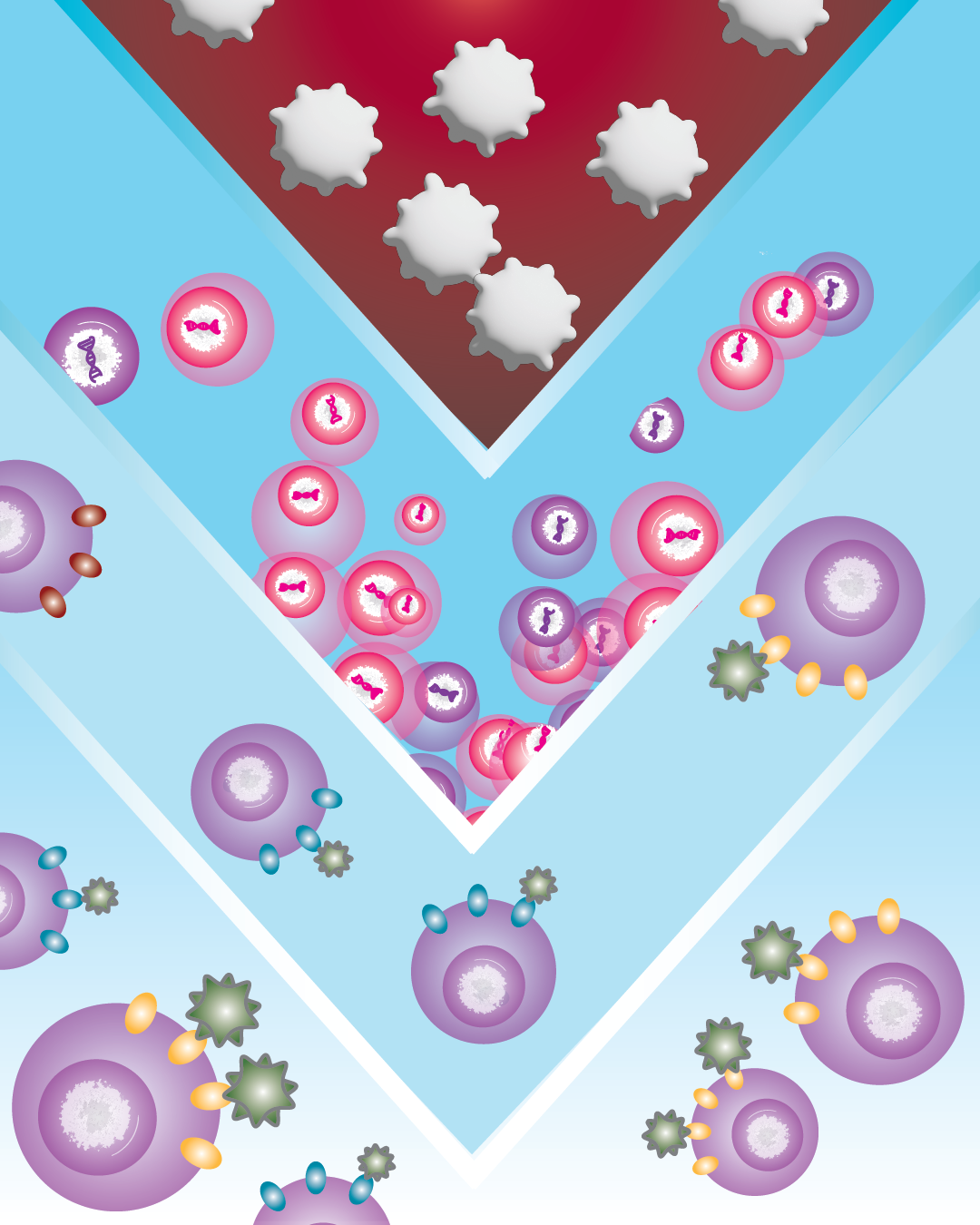Gaywallet (they/it)
I’m gay
- 63 Posts
- 112 Comments
In certain fields, at least, there are important steps these papers provide such as screening and review that are simply not feasible through as self-hosted. People who understand what the paper is about and can sniff out bullshit - be it cooked numbers, incorrect figures, improper citations, etc. are an important part of the process. Heck, even among academic papers out there, some are much lower ‘quality’ than others in that they are frequently bought off or have poor review processes allowing fluff and bad science to get through.
With all that being said, scihub is a thing and even paid journals are often easily pirated.

 5·3 months ago
5·3 months agoFraming it as what ‘sparked complex life’ is what makes it slightly clickbait-y. The circumstances which involved the creation of RNA/DNA is arguably more important when we talk about what ‘sparked complex life’, but it’s really borderline and this is an important discovery and previous gap in knowledge so I think it’s excusable here.

 15·3 months ago
15·3 months agoSlightly clickbait-y title, but super cool and important discovery!
I found the following particularly interesting:
They also learned that in pairings that work, both partners adapt to each other — a phenomenon that has been largely overlooked. It wasn’t just the bacteria adapting to a new environment; the host changed too, even in the early stages. “That is a fundamentally important question that people have ignored,” Richards said. “This opens the doors for real advances.”

 2·5 months ago
2·5 months agoI’m removing this because Sabine has repeatedly been lambasted by the media for junk science, and because she’s a known transphobe.

 4·5 months ago
4·5 months agoIt’s a big step up from literally drowning lab rats as an experiment, but we’ve got a long way to go before we get even reasonably ethical with lab animals 😔
To be fair if anyone was gonna not kill them when they’re done, this lab seems like they might be the ones.

 4·5 months ago
4·5 months agoYes, but if a review board were to sign off on them and then someone managed to significantly hurt or damage themselves, one could theoretically apply some of the blame to the review board for not doing their job to ensure that a study was safe. The whole idea of having ethics as a part of the review board was born of some of the studies they used to sign off on that were ultimately problematic and resulted in seriously damaging some individuals, such as minorities and kids.

 6·5 months ago
6·5 months agoSorry by experimental what I meant here is something which is not ready to be tested in humans - this scientist was skipping a bunch of the necessary steps to show this is a safe thing to do (in lab grown cells first, for example) to proceed to human experimentation.

 17·5 months ago
17·5 months agoEthically speaking, we should not be experimenting on humans, even with their explicit consent. It’s not allowed by any credible review board (such as the IRB) and in many countries you can be held legally liable for doing experiments on humans.
With that being said, there have been exceptions to this, in that in some countries we allow unproven treatments to be given to terminal patients (patients who are going to die from a condition). We also generally don’t have repercussions for folks who experiment on themselves because they are perhaps the only people capable of truly weighing the pros and cons, of not being mislead by figures of authority (although I do think there is merit of discussing this with regards to being influenced by peers), and they are the only ones for which consent cannot be misconstrued.

 1·6 months ago
1·6 months agoThis isn’t related to science, feel free to repost in news

 8·6 months ago
8·6 months agoMy understanding of the word comes from how I’ve seen it used in American culture. I’m not enough of an etymologist or a sociologist to accurately claim where the term itself was first created or how prevalent its various uses are and will gladly defer to others with more expertise. Thank you for sharing the wiki article for those who are unaware of genders outside the binary in different cultures 💜

 12·6 months ago
12·6 months agospoiler
ladyboy and shemale
are both older derogative terms for trans women

 4·6 months ago
4·6 months agoAbsolutely a possibility. Depends on how often people are using VPNs, whether there’s a distinct difference between political ideology and VPN usage, and the average distance to a VPN exit point. I think it’s fairly safe to assume a similar distribution of VPN usage across political bounds and generally speaking geographically distributed fairly evenly, with perhaps major cities and higher educated areas using VPNs slightly more often but with the exit point also being closer to the true point of access.

 25·6 months ago
25·6 months agoTo be fair, they also do the same with… well everyone. They like a strict hierarchy with straight white married christian cis men at the top.

 18·6 months ago
18·6 months agoJust want to acknowledge the the writing and title choice in the article itself are annoyingly smug, but the data analysis itself I found interesting.

 8·7 months ago
8·7 months agoI appreciate your warning, and would like to echo it, from a safety perspective.
I would also like to point out that we should be approaching this, as every risk, from a harm reduction standpoint. A drug with impurities that could save your life or prevent serious harm is better than no drug and death. People need to be empowered to make the best decisions they can, given the available resources and education.

 13·7 months ago
13·7 months agoVenus rhymes with a piece of anatomy often found on men. Obviously they got it backwards

 3·7 months ago
3·7 months agoLike most science press releases I’m not holding my breath

 6·7 months ago
6·7 months agoGame changer for smart watches if this turns out to work and scale well

 10·8 months ago
10·8 months agoHonestly I would argue we need to expand our definition of what a mental illness is, in order to help these folks get treatment before they go and shoot a bunch of people.
With that being said I think it’s important to call out this distinction for two major reasons. For one, it shines a light on the fact that someone having any mental illness does not mean they are going to go on a mass shooting. For two, it also shines a light on the fact that the people who do break in this way aren’t understood well - if they don’t classify neatly into the existing mental illnesses we have, we by definition do not have good research on the subject. Do patterns exist among this population of mass shooters that we can identify? Are there specific ways that they think which are maladjusted and can be corrected through existing education and mental health offerings? Might they belong to a larger group of illness which also includes other folks who are suffering in other ways, where studying this group might shed light on other folks who need help?


Don’t get me wrong, it’s not a way to solve everything. But an authoritative body can build credibility and hold onto it. People should still be skeptical and still review, but that’s a normal part of the scientific process. Knowing what’s more and less credible is a normal process of research, and learning to assess credibility is important too. Peer review doesn’t need to be torn down as a concept, it just needs to be taken with a healthy grain of salt, like all processes. This is part of why I mentioned how some journals are more reputable than others - it’s a reflection of how often their peer review misses important things, not a reflection of how bullet-proof their science is. Everyone makes mistakes, the goal should always be to make less.
Also, to be clear, I’m talking about the post-research and pre-publish step, not the pre-research proposal step - that form of peer review can fuck right off.
Also of great importance which I should have probably highlighted in my initial post - this is really dependent on the field itself. In medicine people put in effort for that kind of review. I’ve peer reviewed quite a few papers and I’ve received really good advice from peer reviewers on some of the papers I’m on. Certainly this can happen in environments where this kind of review isn’t necessary, but the institutions that exist do make it a lot easier. An open source self-hosted model would make it really hard to get an idea of how many eyes were on a particular paper, and would make keeping up with continuing education difficult… of course unless groups of people made their career reviewing everything that emerges and putting together summaries or otherwise helping to sift through the noise.